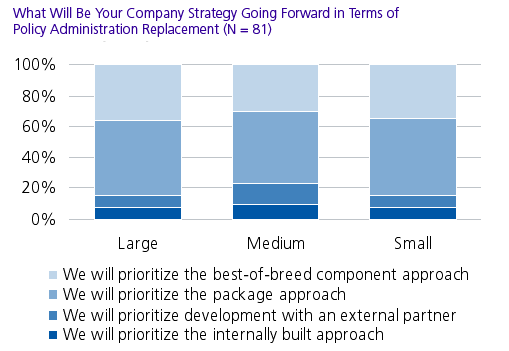The Build Vs. Buy Debate
An Update from the Insurance System Landscape
Abstract
Despite IT vendors’ great progress in offering systems based on modern technology and tailored services to insurers, the build versus buy question remains a hot topic and a key strategic decision insurance companies have to make prior to replacing a core system.
In a new report, The Build vs. Buy Debate: An Update from the Insurance System Landscape, Celent examines the results of a survey designed to obtain an understanding of insurance companies’ preferences in terms of system replacement:
“Insurance companies tend to adopt a selective approach when they have to make a choice to buy or build a core back end system, meaning that they will buy or build depending on the type of business component involved,” says Craig Beattie, Analyst with Celent’s Insurance Group and coauthor of the report.

“A combination of risk appetite and quick benefits are leading to a best-of-breed approach in the long run, and insurers are part way through legacy modernization programmes that will ultimately address their system segmentation approach,” adds Nicolas Michellod, Senior Analyst with Celent’s Insurance Group and coauthor of the report.
This report examines insurance companies’ preferences with regard to the build or buy approach for a variety of systems using a triangle methodology consisting of evaluating past choices by insurers, understanding the existing system landscape and identifying future trends.

